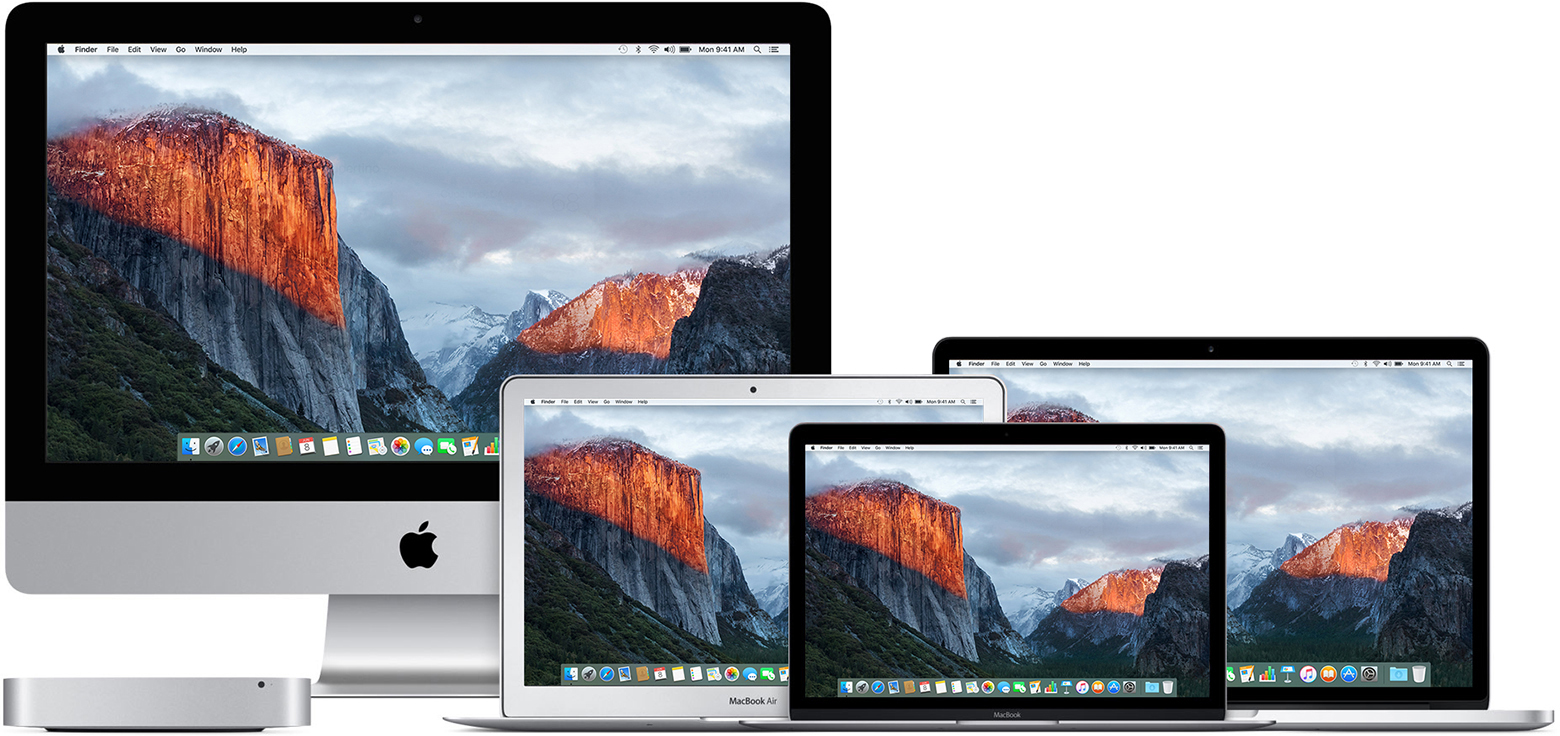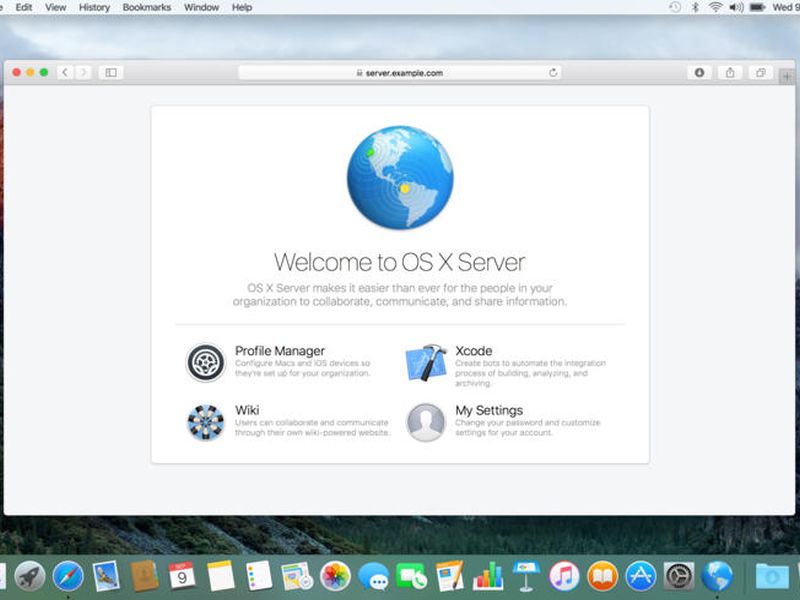Oct 24, 2019 OS X Yosemite remains available for Mac computers that can't upgrade to later versions of the Mac operating system. It started out on PowerPC processors but later transitioned onto Intel processors with Mac OS X Leopard (10.5) the last to natively support the PowerPC architecture and Snow Leopard (10.6) the last to support PowerPC applications on Intel-based Macs. All versions of Mac OS X that were made to run on PowerPC systems (with the exception of. Os x 10.5 free download - Apple Java for OS X 10.5, Apple Mac OS X Mavericks, R for Mac OS X, and many more programs.
Say hello to macOS 10.13 High Sierra, the new operating system for Mac desktops and notebooks that brings some impressive under-the-hood refinements. If you were expecting some big overhauls, chances are you’ll be disappointed at a first view. But look closer and you’ll discover the fine details that amount to a better user experience and more power for your Mac.
Upgrading to macOS High Sierra is seamlessly simple, taking up little time and almost no effort. And with the upgrade guide we’ve prepared, you’re going to be running new OS in no time.
Why you should upgrade to macOS High Sierra
The team at Apple went right on target, tweaking those features and apps that promise to be in the spotlight in the near future. With a new and improved AFPS file system, a faster browser (which promises to be the fastest on the market), stellar graphics, better gaming capabilities and VR support, macOS 10.13 is definitely here to make a stand.
To really give your Mac a boost, upgrading to the new High Sierra is kind of mandatory. Think only about how much space you’ll save with the new operating system that compresses video up to 40% more. macOS High Sierra also comes with an improved Photos app, that now offers professional editing tools that will keep you hooked to find the perfect composition. Of course, the most important upgrade comes from Metal 2, that promises stellar GPU and CPU capabilities, while opening the world toward VR and AR.
So, to conclude: upgrade to macOS High Sierra for more space, speed and power. We should have started with that, right?
Mac Os 10.8 Update Free
How to prepare for the macOS High Sierra upgrade

Now that you’ve decided that you cannot live without the new macOS 10.13 High Sierra, it’s time to thoroughly prepare for the upgrade. Do note that the beta version now available may not contain all the features, so if you want to upgrade for a specific feature, make sure it’s included. Let’s go!
In order to prepare to upgrade to High Sierra you should, of course, verify if your Mac is compatible with the new system. As a general rule, any late 2009 Mac or newer will theoretically be able to run it without any issues.
Next, you should do a thorough Mac cleanup to have it running smoothly even before upgrading. A complete cleaning process includes deleting duplicate documents, photos and files, while also removing temporary files and cache data that built up in the background. You can do this manually (if you have the patience) or you can turn to an app such as CleanMyMac X to have it do all the dirty work for you.
Having a healthy Mac is key to making the most and enjoying the best of macOS High Sierra. Thus, it’s mandatory to check if your Mac has any issues before performing the upgrade. How?
- Open Disk Utility
- Select your startup drive
- Click on the First Aid tab
If you’re lucky, your Mac won’t have any problems. But if you live in the real world, you’ll have to perform some repairs by using the Repair Disk. Restart and hold Command+R to perform the repairs with Disk Utility.

The final preparation step regards the free space necessary for macOS High Sierra. The official sources from apple.com recommend having 8GB of free space before upgrading to the new system, but we feel more comfortable with reserving about 15GB. What can we say, we like our space. If you don’t have enough space, that means you Mac still needs a bit of cleaning.
How to backup Mac before the upgrade
Backing up your Mac before a major upgrade is a necessity, especially if you’re going for a beta version. You don’t want to risk losing any precious info, so there’s no excuse for skipping this step.
You can easily backup your Mac by turning to Apple’s own software, Time Machine, that saves a copy of everything on your Mac on hourly, daily, monthly and weekly backups. What’s more, except the automatic backups, you can also customize the process and have your most precious docs and files backed up manually from System Preferences.
In order to use Time Machine, you also need an external storage device. How big? The bigger the better. Choose your favorite from USB, SDD, NAS drive or Thunderbolt hard drive.
Step by step upgrade to macOS High Sierra
Once you’ve prepared your Mac for the upgrade, it’s time to get the process started. Read on to find a comprehensive guide to a fast and safe upgrade.
- Choose a safe and trusted network for the upgrade
All major upgrades should be done from a trusted network, adding speed and safety to your download and installation. The best place to perform the upgrade is from the comfort of your home network and you should avoid WIFI connections and especially hotels, restaurants or public networks. - Log into iCloud
This step is pretty straightforward, yet necessary for the upgrade process, as many Mac apps have iCloud integrated parts. So, to have everything run smoothly, log into your account and proceed. - Update to the latest version of your current OS
To avoid any problems in the upgrade process, having the latest updated version for your current OS is mandatory. Why? Because your OS is going to be as stable as possible, with all the initial issues fixed and all bugs eliminated.
Make sure you’re running the latest updated version by checking the Updates folder in the App store.
It’s also important to have all 3rd party apps updated to their latest version as well. Check the apps purchased through the App Store by using the same method as above. For the other apps you’ve externally brought in you’ll need to perform a manual update. - Download macOS High Sierra
Right now, macOS High Sierra is already available for all users. You can download it in the standard fashion on the Mac App Store.
Here's the direct link. - Upgrade to macOS High Sierra
Open the installer from Applications (if it doesn’t open automatically) and hit continue. The on-screen instructions are going to make it really easy for you, so follow them religiously and you won’t be able to do any wrong. That’s it!
Next, make sure to set up for automatic updates from your System Preferences and the App Store, in order to always have your Mac performing at its best.
So there you have it! We hope you enjoy the upgraded features and your Mac’s new regained speed and, hopefully, extra space.
These might also interest you:
Check compatibility
You can upgrade to OS Yosemite on any of the following Mac models. Your Mac also needs at least 2GB of memory and 8GB of available storage space.
MacBook introduced in 2009 or later, plus MacBook (13-inch, Aluminum, Late 2008)
MacBook Air introduced in late 2008 or later
MacBook Pro introduced in mid 2007 or later
Mac mini introduced in early 2009 or later
iMac introduced in mid 2007 or later
Mac Pro introduced in early 2008 or later
Xserve models introduced in early 2009
To find your Mac model, memory, storage space, and macOS version, choose About This Mac from the Apple menu . If your Mac isn't compatible with OS X Yosemite, the installer will let you know.
Make a backup
Before installing any upgrade, it’s a good idea to back up your Mac. Time Machine makes it simple, and other backup methods are also available. Learn how to back up your Mac.
Get connected
It takes time to download and install OS X, so make sure that you have a reliable Internet connection. If you're using a Mac notebook computer, plug it into AC power.
Download OS X Yosemite
For the strongest security and latest features, find out whether you can upgrade to macOS Catalina, the latest version of macOS.
If you still need OS X Yosemite, use this link: Download OS X Yosemite. A file named InstallMacOSX.dmg will download to your Mac.
Mac Os X 10.10
Install the macOS installer
Double-click the downloaded file to open a window showing its contents. Then double-click the file within, named InstallMacOSX.pkg.
Follow the onscreen instructions, which will guide you through the steps necessary to install.
Begin installation
After installation of the installer is complete, open the Applications folder on your Mac, then double-click the file named Install OS X Yosemite.
Click Continue and follow the onscreen instructions. You might find it easiest to begin installation in the evening so that it can complete overnight, if needed.
Free Upgrade For Mac Os X 10 10.5 1
Allow installation to complete
Please allow installation to complete without putting your Mac to sleep or closing its lid. Your Mac might restart, show a progress bar, or show a blank screen several times as it installs both OS X and related updates to your Mac firmware.
Learn more
- OS X Yosemite won't install on top of a later version of macOS, but you can erase your disk first or install on another disk.
- You can use macOS Recovery to reinstall macOS.